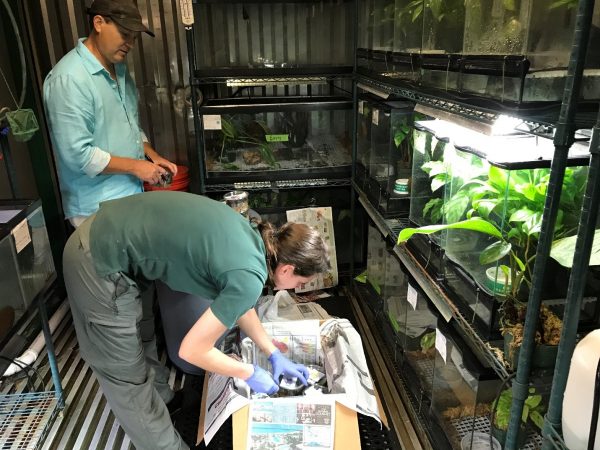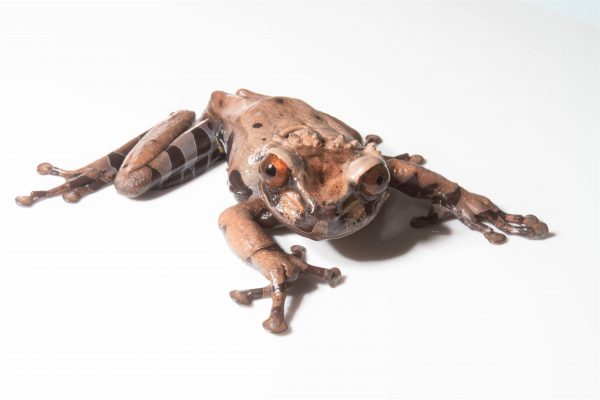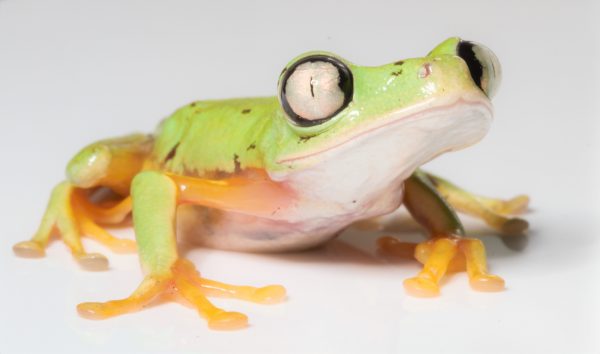In 2004, as the amphibian chytrid fungus was sweeping through Panama, a group of conservationists established the Amphibian Rescue and Conservation Coalition (ARCC). At that time, there was insufficient capacity in Panama to care for captive assurance colonies in country and the goal of this project was to establish U.S. captive assurance colonies of multiple Panamanian species. Frogs were collected from the wild and exported in 2005 to the Atlanta Zoo and Atlanta Botanical Gardens who cared for the animals.

Dr. Brad Wilson and Chelsea Thomas inside the amphibian rescue pod at the Atlanta Botanical Gardens, packing genetically representative frogs from the collection for their flight.
Of the multiple species in the collection, the crowned treefrog (Anotheca spinosa) and the lemur leaf frog (Agalychnis lemur) bred well in captivity. The collection at the Atlanta Botanical Gardens was held in complete quarantine isolation for the last 8 years. While in Panama, two amphibian conservation-breeding facilities were built to care for endangered frogs. However, on the Panama side, we had too few founder animals to assure the long-term genetic integrity of these species. After careful health screening for amphibian chytrid fungus, parasites and examination of pathology records for the collection it was determined to be in good health, and a total of 47 genetically representative individuals of known lineage were identified for repatriation to Panama.

A Crowned treefrog Anotheca spinosa This species lives in the rainforest canopy and breeds in treeholes where the mother lays unfertilized eggs to feed her tadpoles.

The lemur leaf frog Agalychnis lemur. Wild populations have been decimated in the wild due to the amphibian chytrid fungus.
After obtaining permits from the Panamanian Ministry of Agriculture and the Ministry of Environment, and well as the US Department of Agriculture and the Fish and Wildlife Service, the frogs were flown back to Panama on May 16, 2018. The frogs were packed to IATA specifications (In delicups with damp moss, artificial leaves and packed in a cooler with Phase 22 thermal regulating packs). The frogs all made the trip in good health and are now being held in a quarantined shipping container at the Panama Amphibian Rescue and Conservation Project in Gamboa. After a quarantine period, we will breed these animals with the captive-breeding stock already in Panama.

Elliott Lassiter, Jorge Guerrel (Smithsonian Tropical Research Institute) and Chelsea Thomas (Atlanta Botanical Gardens) unpack frogs inside a quarantined shipping container in Gamboa.
Visitors to the center can see frogs through a display window as part of a miniature exhibition.
The 14 years of investment, and dedicated conservation efforts at the Atlanta Botanical Gardens will significantly improve the genetic population management goals for both of these species in Panama, bringing the original ARCC project full circle.
